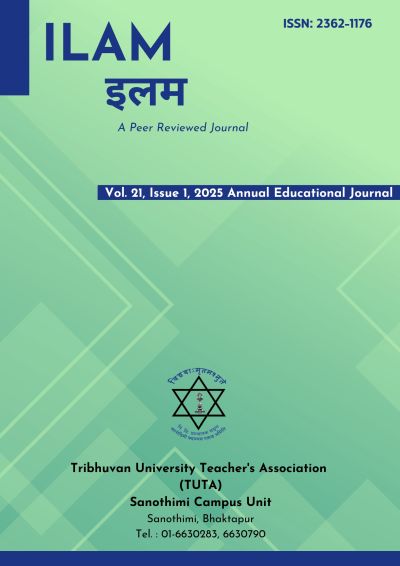English Medium Instruction in Nepalese Community Schools: Perceptions, Practices, and Pedagogical Challenges
DOI:
https://doi.org/10.3126/ilam.v21i1.75652Keywords:
English Medium Instruction, bilingual education, teacher development, linguistic challenges, cultural preservationAbstract
The adoption of English Medium Instruction (EMI) in Nepalese community schools has played a significant role due to its implications for global competitiveness, socio-cultural calls, local cultural sharing, and promotion. This article essentially explores the perceptions, practices, and challenges associated with EMI in community schools in Nepal, focusing on its implementation in subjects such as science, mathematics, and computer science linked to school education and the global job market. Employing a phenomenological research design, data were gathered through in-depth interviews and field observations with students, teachers, School Management Committees (SMCs), parents, and local government representatives. The findings of this study reveal an urgent need for EMI in community schools due to pressure created by institutional schools and globalized socio-economic realities. It also discloses the bilingual approach to EMI due to limited English proficiency among teachers and students, and highlights the need for effective teacher training programmes to address pedagogical and linguistic challenges. Emphasizing a context-specific approach to EMI implementation in Nepal, the study concludes with recommendations for policymakers, educators, and stakeholders to adopt informed and effective strategies for effective EMI implementation while balancing global aspirations with local realities.




